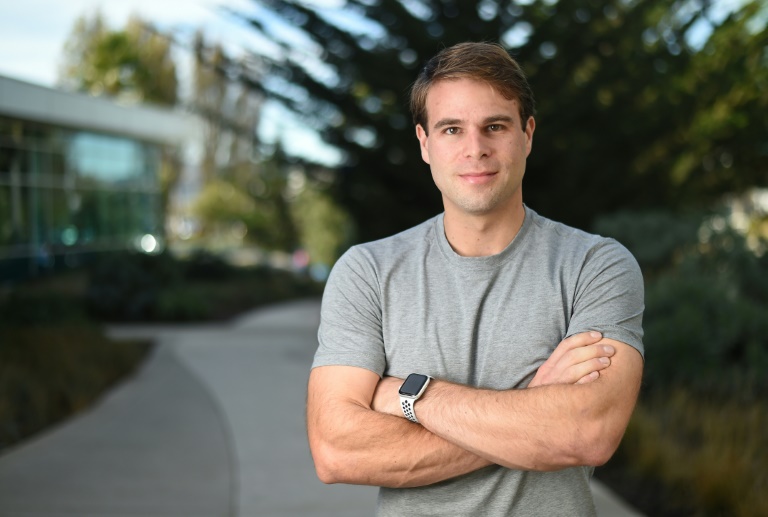
All Ryan Kramer had to do was to swab his cheek and embark on nine days of genealogical research to identify his biological father, a man who thought he would remain anonymous when he donated his sperm and never took a DNA test himself.
The year was 2005, when consumer DNA tests were in their infancy. Kramer was 15.
Thirteen years later, the explosion of individual DNA test kits has opened the floodgates for people who were born from sperm or egg donations. Increasing numbers of people are using the technology to uncover the identities of their donors.
In the growing field of assisted reproduction, donors used to be guaranteed anonymity.
But things have changed, according to genetic geneologist CeCe Moore, founder of DNADetectives.
“It would be naive to think that a person could donate sperm or eggs and stay anonymous in the United States,” said Moore. “It isn’t going to happen.”
Now, even if they never send their own DNA to a consumer ancestry site, donors can be identified indirectly by their genetic proximity to a distant cousin who took a DNA test.
With at least 10 million people having taken a DNA test in the United States alone, probability alone suggests that nearly all the population could be linked somehow to one of the registered profiles online.
“Disclosure will occur at some point in time. And I think that’s just an inevitable consequence,” said Peter Schlegel, president of the American Society for Reproductive Medicine.
“And I would be shocked if that was not part of the standard discussion in the next five years.”
Finding his donor
The site that sold Kramer his DNA kit found two men in its database whose genome resemblance meant they shared a common ancestor with Kramer, dating back to the 17th century.
Kramer and his single mother, Wendy, consulted public records in Los Angeles. They knew the donor’s date of birth — the only biographical information given out by the sperm bank — and wanted to see if anyone matched the unusual last name of the two men found.
Bingo. They found their match.
Kramer contacted the man, who said he was “thrilled” to hear from him. The two have stayed in regular contact ever since.
“He was the very first donor conceived person to find his donor through DNA testing,” said Wendy Kramer, who founded the Donor Sibling Registry in 2003. Now it has 60,000 members.
Extended family
The four DNA websites that offer match services — Ancestry, 23andMe, Family Tree DNA, My Heritage — today have so many users that it is rare for someone not to find at least one distant relative.
From that second or third degree cousin, traditional genealogy tools can be employed to rebuild a family tree up to the shared ancestor, such as vital records, death notices and obituaries, census records, or newspaper archives.
Then, the possible donor can often be nailed down by elimination based on sex, age and location. The more public records there are, the faster the search.
Thanks to DNA sites, Kramer has found eight half brothers or sisters since 2017 — five of those just this summer.
In all, he has found 16 half siblings since 2005.
“It’s a reality that I could be continuing to find half siblings every couple of months or every year for the rest of my life, which is wild,” said Kramer.
“But it feels kind of normal to me.”
Kramer, who is 28 and a product manager at Google’s life sciences company Verily in San Francisco, said the “experience has been overwhelmingly positive.”
“I consider these people like extended family members.”
Banned in France
Between 2015 and 2017, sales of DNA test kits boomed in the United States and allowed websites to build a critical mass of DNA profiles.
It was around that time when Erin Jackson learned she had been conceived with donor sperm.
She immediately tested her DNA and up popped a half-brother.
“The resemblance was undeniable,” said Jackson, a 38-year-old freelance writer.
Then, based on the name of a second cousin discovered on the site, and after some substantial genealogical research, she and her husband managed to trace the ancestry down to the donor.
Once contacted, he asked her not to write again.
Jackson says she hopes the end of anonymity will force sperm banks to limit the number of children born to the same donor.
“Having less anonymous donors is a good thing,” she said.
In the US, there are no restrictions. In Britain, a maximum is set at 10 families per donor.
The US case points to a future where anonymity laws in other countries regarding egg and sperm donations may become moot.
France, for instance, is now debating whether to end anonymity for donations. The law is currently strict there, and consumer DNA tests are banned.
But it is not hard to get around the ban, and in theory it would only take a few hundred thousand profiles to start to get matches.
It is already the case in Britain and, to a lesser extent, in the Netherlands, Moore said.




